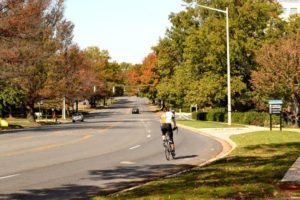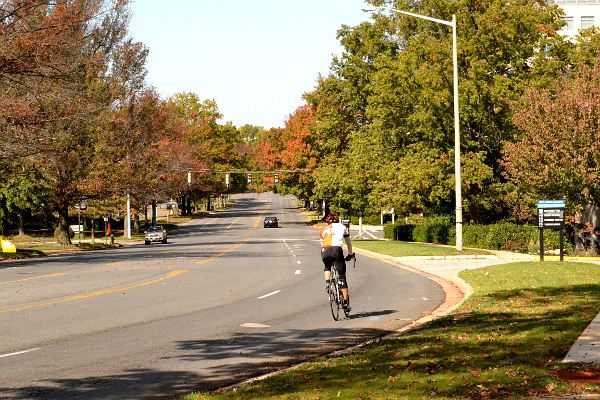When Walkscore began a few years ago, it had a simple mission, give people more information about something that had previously been immeasurable, walkability. The database used metrics of both physical walk access like walksheds, pedestrian access, and block layout to see how easy it is to literally move from one point to another, but also a measure of how many things are in that zone which gives people a reason to walk.
It is, by no means, a perfect science. There is no measure of how good of a walk one can have, lacking the quality of the walkways, issues regarding intersection safety, and treats a restaurant the same as a Starbucks. However, it is a decent measure relative to other areas.
 With that primer out of the way, the walkscores in Tysons are telling. We see today a tale of two cities in Tysons, with obstacles like the Beltway acting as a barrier for connectivity and access. The most walkable part of Tysons will not come as a surprise to most, it is the region North of Route 7, South of the Dulles Toll Road, and West of the Beltway. This area has consistent sidewalks, has relatively few obstacles in terms of major roads, and a ton of restaurants and retail (yes, some of it being located in a mall).
With that primer out of the way, the walkscores in Tysons are telling. We see today a tale of two cities in Tysons, with obstacles like the Beltway acting as a barrier for connectivity and access. The most walkable part of Tysons will not come as a surprise to most, it is the region North of Route 7, South of the Dulles Toll Road, and West of the Beltway. This area has consistent sidewalks, has relatively few obstacles in terms of major roads, and a ton of restaurants and retail (yes, some of it being located in a mall).
 There are parts of the city, namely North Central Tysons (one of the eight districts) that have apartments with walkscores in the high 70s due to these conditions. There are also parts of Tysons, along the fringes as it tapers to single family homes, that begin to plummet into the low 20s and lower. It doesn’t help that these areas are also isolated from the rest of walkable Tysons by major roads and the Beltway.
There are parts of the city, namely North Central Tysons (one of the eight districts) that have apartments with walkscores in the high 70s due to these conditions. There are also parts of Tysons, along the fringes as it tapers to single family homes, that begin to plummet into the low 20s and lower. It doesn’t help that these areas are also isolated from the rest of walkable Tysons by major roads and the Beltway.
Unfortunately, that dynamic is unlikely to change any time soon. Most of the development to date has been proposed in the parts of Tysons that have 70+ walkscores, including the NV Clydes project, Arbor Row, and the redo at Tysons Mall. There is some hope with projects like Scotts Run Station, Capital One, and LCOR Commons of McLean. However, these projects are not as fast-tracked for mixed use as those found in North Central Tysons.
In the case of Scotts Run Station, the first building at the Garfield project, will be residential use only. There has been no indication that the plans for a Market Street at the project will be completed in the near future. LCOR commons suffers from the same lack of mixed use and to date there is no indication on when ground might be broken. Capital One has lofty goals, but much of their early focus will be on their proposed 470′ new office headquarters, with no plans to expedite sale or development of the remainder of the project for mixed use.
This is contrasted by the extremely quick construction schedules for mixed use occurring at Arbor Row (where there is a chance for 3 mixed use high rises to be under construction by year end) or Tysons Corner Mall where the new VITA, Hyatt, and Tysons Tower complex will include major improvements for walkability with a plaza which also will be home to several retail and restaurant options.
It will be very interesting to see what happens once these projects, like Hanover’s Arbor Row, are completed in terms of further walkscore divergence between North Tysons and outer areas of Tysons. Hopefully, we will get good news about ground breakings in other parts of Tysons sooner than later, but it may be an indication of how the market feels about urban viability in a city that for many decades has been the epitome of auto-centric design.

